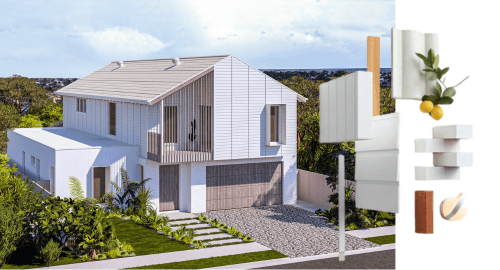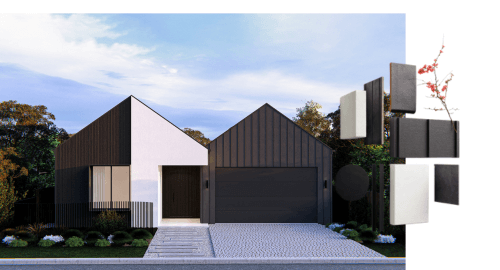Selecting the right fireplace for your project should rely on more than just aesthetics. In this blog post we list three fireplace types, and what you will need to include them in your home. In our next article, we detail how they can look great in your home. Stay tuned to find out how to style your chosen fireplace type!
Wood-Burning Fireplace
Wood-burning fireplaces are one of the most popular types of fireplaces you can feature in your home. These come in all different shapes and sizes and can adapt to multiple home styles. In terms of functionality these are great at generating heat and providing that ambient warmth, you just can’t get from an air conditioner. The most popular ways to facilitate a wood-burning fireplace in your home, include either a free-standing or wall mounted design, and having an open or closed fire. Closed fireplaces, also called ‘closed combustion fireplaces’, refer to the flames being sealed behind a glass door. These are usually safer than an open fireplace, as they prevent embers and sparks travelling out of the fire. They also provide more warmth as they regulate the amount of air flowing in the combustion chamber. Open fireplace designs don’t facilitate as much heat, due to a larger amount of air flow. However, if what you’re after is more of an ambient glow and the unmistakable sound of crackling flames, this style is for you.
In terms of placement, its important to consider the configuration of the room, to feature the fireplace. While a free-standing fireplace can create a great focal point for a room, built-in fireplaces take up much less room, and blend seamlessly into a wall. It’s also vital that you decide on a fireplace location, at the design stage of your project. This may prevent costly changes later, because of variations in wall and floor materials to enable your chosen fireplace. Built in fireplaces need to be installed with non-combustible casing and adequate ventilation through a chimney or flue. Free-standing fireplaces need to be chosen in conjunction with distances from the type of wall. Deciding on the location and style of your fireplace in the design stage, enables your builder to indicate the additional costs in your initial tender. It’s also important to consider the ongoing costs of firewood and other materials, before you commit to a wood-burning fire place.
Gas-Burning Fireplace
Gas–burning fireplaces eliminate the time-consuming nature of a wood-burning fireplace. Between firewood and cleaning, they do take effort to maintain. Gas fireplaces are very easily sustained and controlled. Many of the newer models can be ignited with a switch, or even a remote, rather than dealing with matches and kindling. They are easily kept clean, as the ashes and soot don’t need to be removed after a certain period. Gas fireplaces are also safer, as they don’t have sparks or open flames, which may be more beneficial for families with younger children or pets.
These fireplaces can be placed in a larger variety of places, opposed to a wood-burning fireplace. This is due to the installation of a flue instead of a full chimney. A chimney is built into the outside of the home, constructed from stone or brick. Whereas, a flue is simply an internal shaft that vents the smoke and gases. This means it’s easier to feature gas fireplaces in your home. Make sure you have a chat to your builder about the costs associated with installation.
Electric Fireplace
Electric fireplaces are hassle free and elegant. They come in a range of different shapes and sizes and stray away from traditional fireplace design. Electric fireplaces draw in air, heat it internally and disperse the warm air with a fan. Even though there are no real flames used, these designs are still functional and can easily heat up a room. One of the main attractions of these fireplaces, is that they can be enjoyed all year round, because they display an image of a fire. This means that they can still provide ambience and a lovely aesthetic, even in the warmer months, when the harsh heat of flames isn’t necessary.
These fireplaces don’t require any professional installation, because they don’t need a flue or chimney. They are the safest and easiest option for families wanting a fireplace, but don’t want the increased risk and dangers associated with sparks and flames. In terms of cost, how much you spend on your electric fireplace will be revealed in the quality of use, and you definitely get what you pay for. It’s also important to consider how this may contribute to your power bills. Depending on certain brands, these types of fireplaces can increase your electricity bill significantly. Ensure you ask the individual manufacturer, or do research of your own to seek out the most energy efficient models.
We hope these ideas have been helpful for understanding what type of fireplace would be best for you. For more information, please give us a call, and chat to one of our friendly staff today. Make sure to also stay tuned for our next instalment where we discuss what fireplaces LOOK the best in your home.


